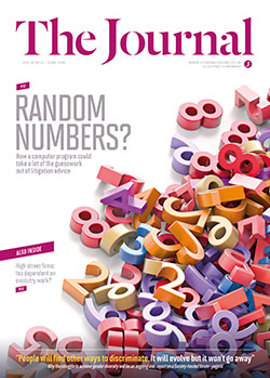On a sticky wicket

With the rapid evolution of online streaming and video capture apps, the English High Court’s recent decision in England & Wales Cricket Board and Sky UK v Tixdaq Ltd and Fanatix Ltd [2016] EWHC 575 (Ch) should bring welcome relief for holders of copyright in broadcast and film who are looking to protect their interests online.
The Cricket Board (ECB) are the holders of copyright in: (i) the broadcasts of most matches played by the English and Welsh cricket teams; and (ii) the films created from those broadcasts (e.g. action replays). Through lucrative licensing agreements, a select few parties have broadcasting rights to exploit these copyright works, including Sky and Channel 5.
During June 2015, ECB became aware that Fanatix and its customers, through its Fanatix video capture and streaming app, were capturing and uploading clips from various test matches on a near-live basis. These clips included the majority of the match highlights (such as wickets and action replays of key incidents).
Fanatix had attempted to limit the risk of a claim of copyright infringement by: (i) ensuring each disputed clip was no more than eight seconds long; (ii) providing for clips to be uploaded with comments; and (iii) insisting on the attribution of the source of the clips.
Despite these measures, ECB raised an action for copyright infringement. Fanatix’s main argument was that the app’s use of the ECB copyright works was permitted under the “reporting current events” defence in s 30(2) of the Copyright, Designs and Patents Act 1988.
“Citizen journalism”?
To assess whether there was copyright infringement, Arnold J first considered whether a substantial part of the copyright works had been reproduced by Fanatix, noting that the test of substantiality is “to consider the degree of reproduction both quantitatively and qualitatively, having regard to the extent to which the reproduction exploits the investment by the broadcaster or producer”. Arnold J found that quantitatively, eight seconds was not a large proportion of each session of play. However, qualitatively, it was clear that the majority of the clips constituted the highlights of the matches, and thus substantially exploited ECB’s investment in the copyright works.
Arnold J then considered the applicability of the s 30(2) defence, which provides: “Fair dealing with a work (other than a photograph) for the purpose of reporting current events does not infringe any copyright in the work provided that... it is accompanied by a sufficient acknowledgment”.
He agreed with Fanatix that: (i) there was no doubt that a cricket match was a current event; and (ii) users of the app could qualify as reporters of current events – s 30(2) was not limited to mainstream journalism and could apply to “citizen journalism” by members of the public.
As regards online “citizen journalism”, the judge observed that if a member of the public captures images and/or sound of a newsworthy event using their mobile phone and uploads it to a social media site like Twitter, that may well qualify as reporting current events, even if it is accompanied by relatively little in the way of commentary, and so benefit from the s 30(2) exception.
However, after careful consideration of the app, and Fanatix’s business plans, he concluded that it was clear the app was not used for the purpose of reporting current events. Rather, its purpose was sharing footage of sporting events. The clips were not used in order to inform the audience about a current event, but presented for consumption because of their intrinsic interest and value. Their use was commercial, rather than informatory. Allowing users to add comments did not change this. Arnold J noted that “users add comments to the clips they are uploading; they do not create a report to which they add clips”. Also, the app’s use of the clips did not amount to fair dealing. It was likely to “have reduced the attractiveness of Sky’s cricket offering”, and to “have a damaging effect on the audience for the ECB’s own service”. Thus, it infringed copyright.
Commentary
Arnold J’s decision will no doubt be welcomed by copyright holders attempting to protect their interests in the face of the growth of online streaming, video capture, and apps that facilitate streaming and sharing video clips. The judgment helpfully sheds light on the meaning of “reporting current events” in a sports context, and gives guidance on when the exception will apply to “citizen journalism”.
Although there will always be room for debate about whether the s 30(2) exception applies to videos uploaded by users, where the boundaries of the defence are obviously being stretched to encompass commercial exploitation of the copyright works in question, the courts will intervene to prevent this, on the grounds that it is not fair dealing.
In this issue
- Brexit: a brand new world
- Plans reports: an evolving scene
- Law and IT: time for a new blend
- Care proceedings, the EU and foreign nationals
- Reading for pleasure
- Opinion: Simon Di Rollo
- Book reviews
- Profile
- President's column
- Coming down the line
- People on the move
- Litigation value and risk analysis
- Views of the gender gap
- Procurement: the twin track approach
- Wills: beware bank raids
- PSLs: no poor relations
- Sanctions: the holy grail
- DNA: how conclusive?
- Restoration riddle
- Tenant farming: the first guidance
- On a sticky wicket
- Looking forward, looking back: developments in anti-doping
- Scottish Solicitors' Discipline Tribunal
- Additional support needs and age criteria
- Paralegal pointers
- Where law and politics meet
- Marsh: why the axe?
- Law reform roundup
- From the Brussels office
- New framework: watch this space
- Lost horizons?
- Payment frauds: the fight goes on
- Ask Ash
- SYLA: the year in focus
- New wind in the sails






